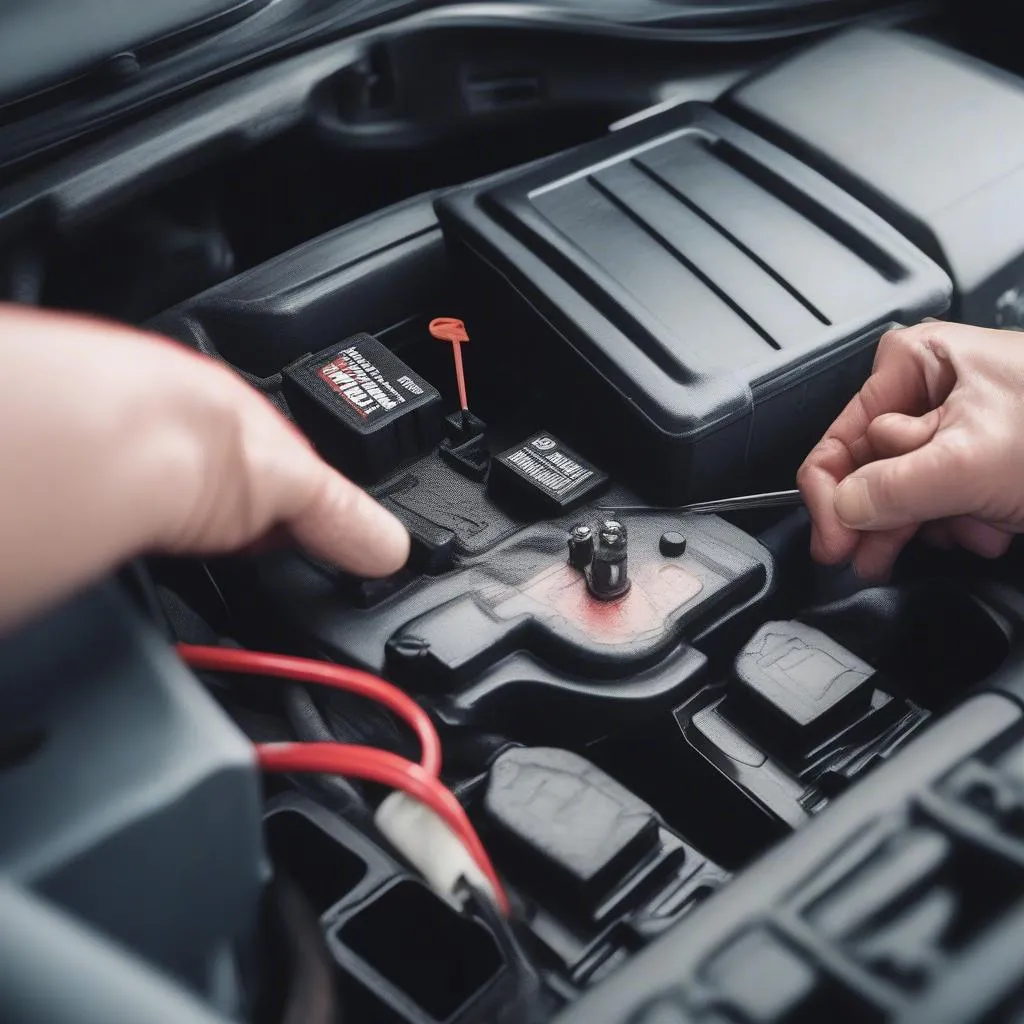The “brake force distribution” warning light illuminating on your dashboard can be a nerve-wracking experience. It signals a potential issue with your car’s braking system, which is crucial for your safety on the road. But what exactly does this warning mean, and how should you respond?
Understanding Brake Force Distribution
Before delving into the warning itself, it’s essential to grasp the concept of brake force distribution. In essence, it’s the technology that ensures your car stops safely and effectively. When you hit the brakes, the brake force distribution system automatically adjusts the braking power applied to each wheel. This dynamic adjustment prevents wheel lockup, especially on different road surfaces, and ensures optimal braking performance.
Decoding the Warning Light
The “brake force distribution warning” light typically illuminates when the system detects a fault. This could be due to a range of issues, from a malfunctioning sensor to a problem with the hydraulic system.
“A common misconception is that the warning light always means complete brake failure,” says automotive electronics specialist John Miller, “while it’s crucial to address the issue immediately, the car usually retains some braking functionality.”
However, the reduced braking efficiency can significantly impact your car’s handling and stopping distance.
Common Causes of Brake Force Distribution Warning
The complexity of the brake force distribution system means various factors can trigger the warning light.
1. Faulty Wheel Speed Sensors
Wheel speed sensors play a vital role in informing the system about the rotational speed of each wheel. If a sensor malfunctions or gets obstructed by dirt or debris, it can disrupt the brake force distribution calculations, leading to the warning light.
2. Issues with the Hydraulic System
The brake force distribution system relies on hydraulic pressure to engage the brakes. A leak in the brake lines, worn-out brake calipers, or low brake fluid levels can all compromise the hydraulic pressure, triggering the warning.
3. Electronic Control Unit (ECU) Malfunction
The ECU acts as the brain of the brake force distribution system. It processes data from various sensors and controls the brake pressure accordingly. A malfunctioning ECU can disrupt the entire system, illuminating the warning light.
4. Wiring Problems
Damaged or corroded wiring within the brake force distribution system can interrupt communication between components, leading to erroneous readings and triggering the warning.
What to Do When the Warning Light Turns On
If the “brake force distribution warning” light appears on your dashboard, it’s crucial to take immediate action:
- Assess the Situation: Is the warning light steady or flashing? A flashing light usually indicates a more severe issue.
- Exercise Caution: Be extra cautious while driving. Increase your following distance and be prepared for longer braking distances.
- Avoid Heavy Braking: Avoid sudden or hard braking as much as possible.
- Seek Professional Help: As soon as possible, take your car to a qualified mechanic specializing in automotive electronics and brake systems.
electronic brake force distribution ebd system warning light
Remote Diagnostics and Software Solutions
In the age of advanced automotive technology, remote diagnostics and software solutions are increasingly valuable in addressing brake force distribution issues.
“Remote diagnostics can often pinpoint the root cause of the problem without the need for immediate physical inspection,” says automotive electronics expert, Sarah Jenkins.
This can save time and money, especially for minor software glitches.
Prevention is Key
Preventing brake force distribution issues is always preferable to dealing with them after they arise.
- Regular Maintenance: Adhere to your car’s recommended maintenance schedule, including brake fluid flushes and inspections.
- Quality Parts: Always opt for high-quality brake pads, rotors, and other brake components.
- Timely Repairs: Address any brake-related issues promptly, no matter how minor they seem.
Conclusion
The “brake force distribution warning” light should never be ignored. While it may not always indicate a complete brake failure, it signals a potential issue that requires immediate attention. Understanding the system, recognizing the warning signs, and seeking professional help can ensure your safety on the road. Remember, investing in preventative maintenance and addressing brake-related issues promptly are crucial steps in avoiding costly repairs and ensuring a smooth and safe driving experience.
Frequently Asked Questions
-
Can I drive my car with the brake force distribution warning light on? While you might retain some braking ability, it’s highly discouraged. The system’s effectiveness is compromised, and continuing to drive could lead to further damage.
-
How much does it cost to fix a brake force distribution problem? The cost can vary greatly depending on the underlying cause, ranging from a simple sensor replacement to more extensive repairs involving the hydraulic system or ECU.
-
Is the brake force distribution system the same as ABS? While interconnected, they are distinct systems. ABS prevents wheel lockup during braking, while the brake force distribution system optimizes braking power to each wheel.
-
How often should I check my brake fluid? It’s good practice to check your brake fluid level at least once a month and have it flushed and replaced as per your car manufacturer’s recommendations.
-
Can a software update fix a brake force distribution warning? In some cases, a software update might resolve minor glitches. However, if the warning persists, further investigation is necessary.

